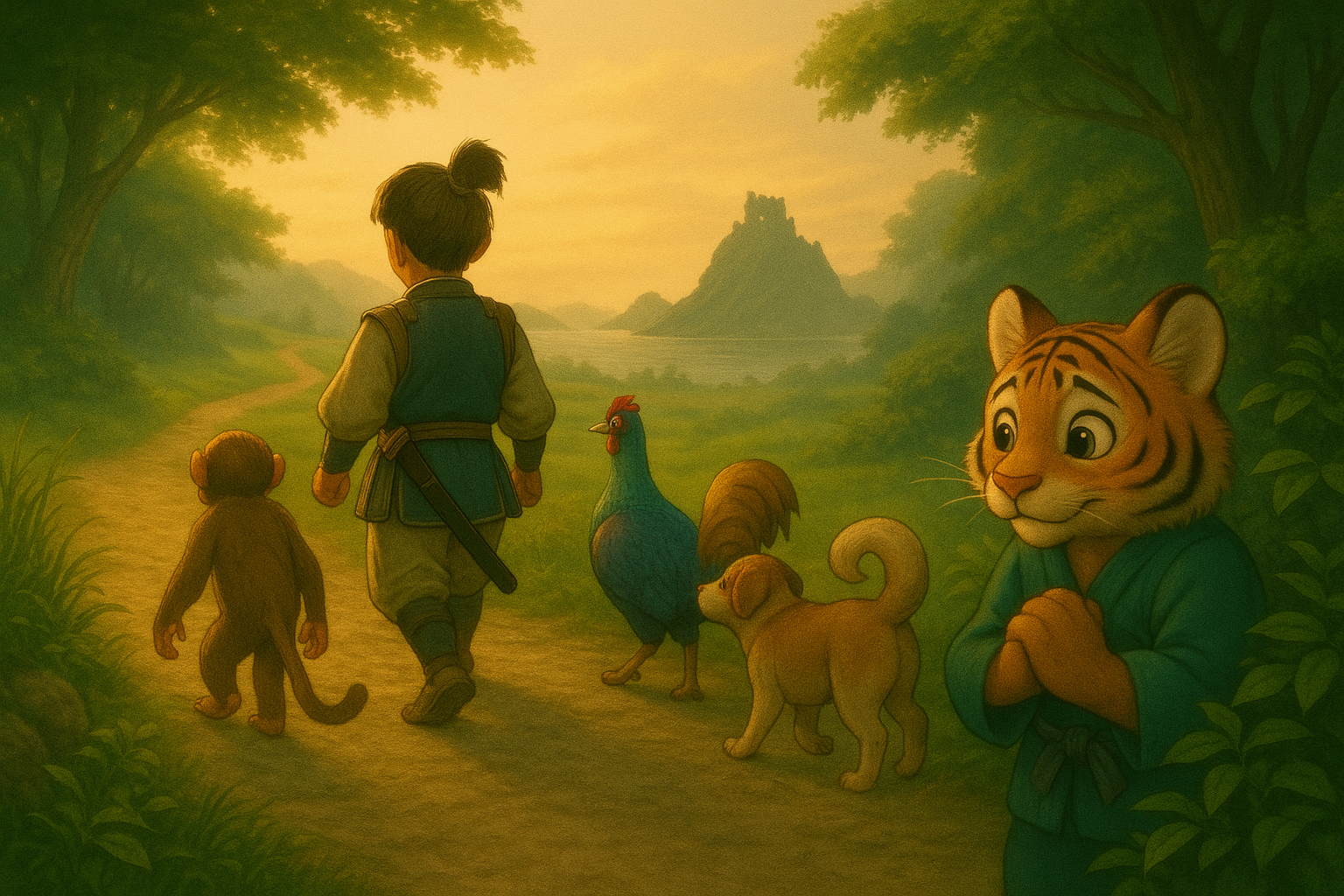Japan’s beloved folk hero, Momotaro, is known for his journey to defeat evil ogres (oni) with the help of a dog, a monkey, and a pheasant. But did you know these three animal companions aren’t random? Their connection to the zodiac reveals a deeper cultural story.
Index
🍑 Japan’s Hero: Who Is Momotaro?
Momotaro is one of Japan’s most iconic folk characters. According to legend, he was born from a giant peach and raised by an elderly couple. When he comes of age, he sets off on a journey to Oni Island “Onigashima” to defeat the evil ogres that have been terrorizing the land.
On the way, he gains three loyal animal companions:
- A dog “Inu”
- A monkey “Saru”
- A pheasant “Kiji”
While most people think of them as random choices, they actually hold zodiac significance.
🧭 Zodiac Connection: Why These Three Animals?
The trio of animals—monkey “申”, pheasant/bird “酉“, and dog “戌”—aligns with three consecutive signs in the zodiac circle, and more importantly, they represent the west direction in traditional East Asian cosmology.
- 申 “Monkey” = Southwest
- 酉 “Rooster/Pheasant” = West
- 戌 “Dog” = Northwest
The west is considered a “lucky” or “auspicious” direction in Japanese geomancy. This makes Momotaro’s journey a symbolic move from a place of fortune “the west” toward misfortune “the northeast, or Kimon—the demon gate”.
In other words, Momotaro travels from luck to confront evil, embodying a deeper philosophical and cultural message.
🗺️ Zodiac and Direction: The Old Beliefs
In traditional Japanese belief systems, especially those influenced by yin-yang theory and feng shui, each zodiac animal corresponds to a specific compass direction. The northeast (Kimon) is the realm of evil, while the southwest and west are associated with positive energy.
So when folklore tells of heroes from the west defeating evil in the northeast, it echoes this symbolic geography. The use of zodiac animals in Momotaro isn’t just storytelling—it’s coded with cultural values and ancient wisdom.
🎴 Cultural Symbolism: Good vs Evil
- Oni “ogres” = evil spirits from the Kimon “northeast”
- Momotaro and his animal trio = heroes from the lucky western direction
This duality reflects the broader cultural battle between good and evil. The zodiac isn’t just about years—it’s also about narrative structure and cosmic balance.
📘 Trivia: Modern Takes and Echoes
While modern stories may not always stick to the original trio, the pattern shows up often:
- In children’s books and anime, sidekicks often come in threes, representing harmony.
- Some modern shows parody or reimagine Momotaro with different animal companions but preserve the symbolic west-to-east journey.
Once you start looking for it, you’ll find echoes of this old legend in more places than you expect.
In the next part, we’ll explore more surprising ways the zodiac shows up in modern Japan—including in names, locations, and even the national pastime of high school baseball.
P.S.
Momotaro is a fairy tale with many different backstories. For example, peaches have long been considered a sacred fruit in China as a symbol of longevity and protection against evil. Also, the river is seen as the boundary between the afterlife and this world, and so on. Incidentally, Momotaro is said to be set in Okayama Prefecture in Japan, and Momotaro goods are often sold there!
またね(Matane)!



コメント